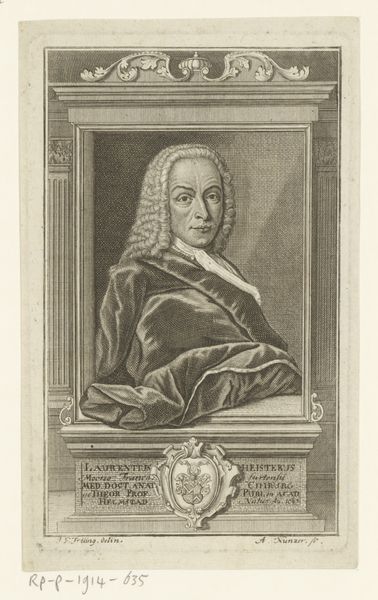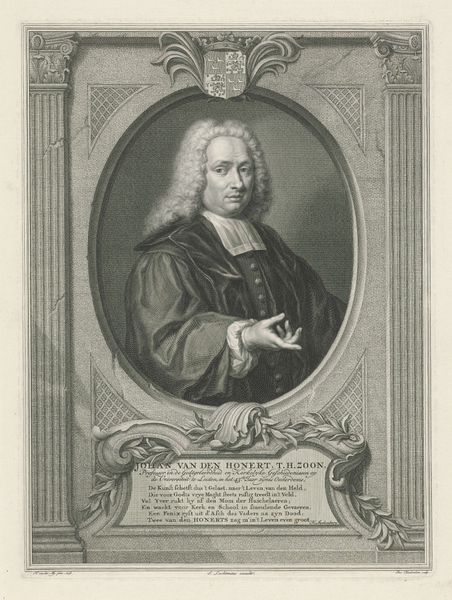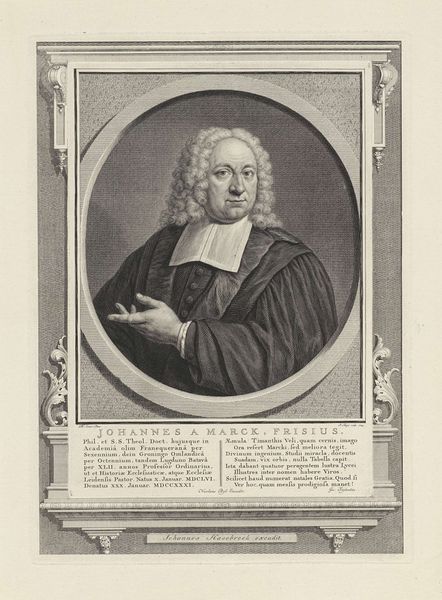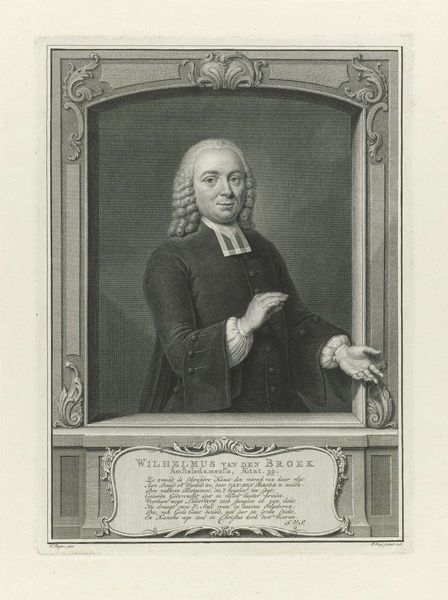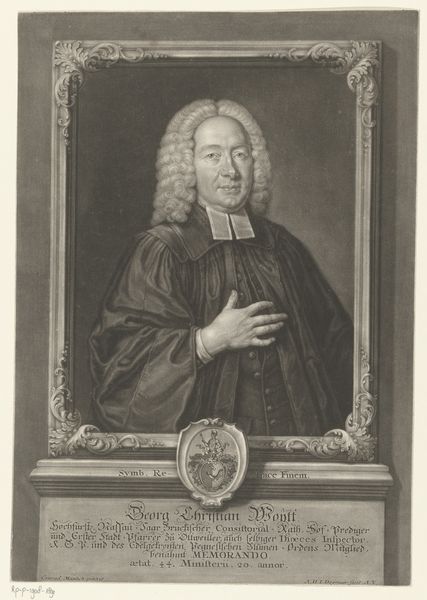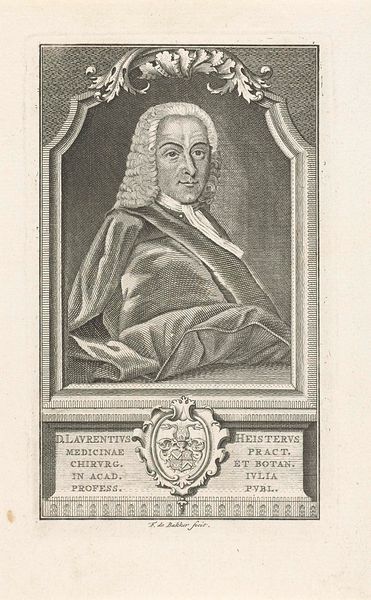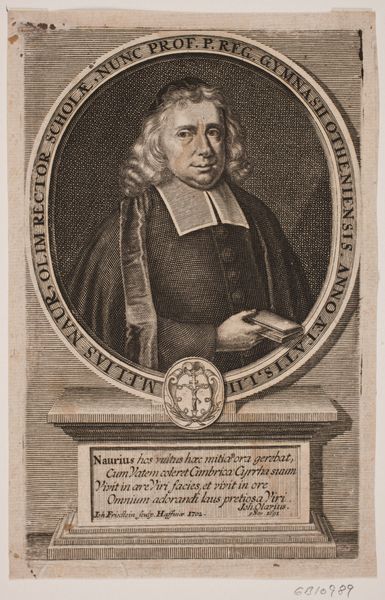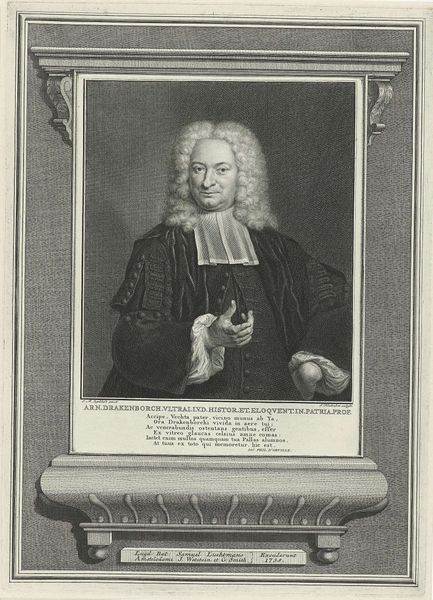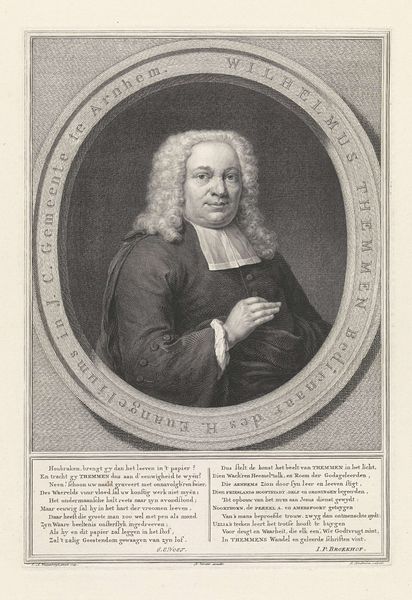
Dimensions: height 336 mm, width 246 mm
Copyright: Rijks Museum: Open Domain
Curator: Here we have Jacob Houbraken’s "Portret van Gijsbertus Matthias Elsnerus," made in 1765. It’s currently housed at the Rijksmuseum. Editor: It’s remarkably crisp. A sense of formality and considered dignity immediately comes across, doesn’t it? I find myself immediately drawn to the incredible precision in the engraved details, especially within that ornate frame and the gentleman's wig. Curator: The engraving medium lends itself perfectly to those intricate details, and to conveying a sense of authority and the Baroque spirit. Gijsbertus Elsnerus, depicted here, was a theologian and pastor. The collar and sober attire speaks volumes. Editor: Indeed. But tell me more about the physical process itself. An engraving, of course, involves carefully cutting into a metal plate... think about the craftsman meticulously carving the details, how the lines translate to ink, how those marks define form and impart expression... a very intensive process of making. Curator: The formal Baroque style uses established symbolic languages—like the arch and inscription to present Elsnerus within the classical tradition of learning and virtue. His calm and almost pious expression invites the viewer to engage with the subject and reflects a very specific time. The weight of tradition sits heavy. Editor: You see tradition; I see the hands of the printmaker – multiple impressions made possible through a painstaking material process. While ostensibly presenting Elsnerus's public persona, it's equally about a collective enterprise— the engraver's skill, the printer's labor, and even the paper maker. The portrait extends beyond individual representation to encompass a whole network. Curator: That's an intriguing perspective—the social dimensions encoded in its materiality. It enriches my understanding beyond simple iconography. Editor: Exactly. By tracing the networks of production, we see the image as less about isolated genius and more about collective cultural creation. The image gains in meaning once we recognize both labor and skill. Curator: I’ll remember this connection—how production shapes the very image, informs the subject portrayed. Editor: A powerful way to connect with the art of this era, wouldn’t you say?
Comments
No comments
Be the first to comment and join the conversation on the ultimate creative platform.

